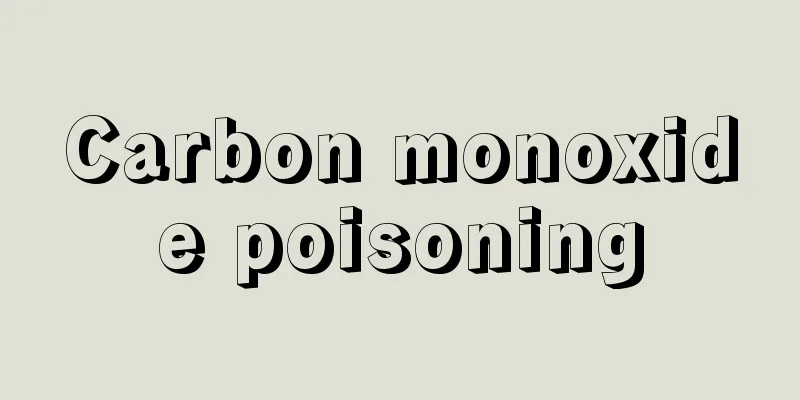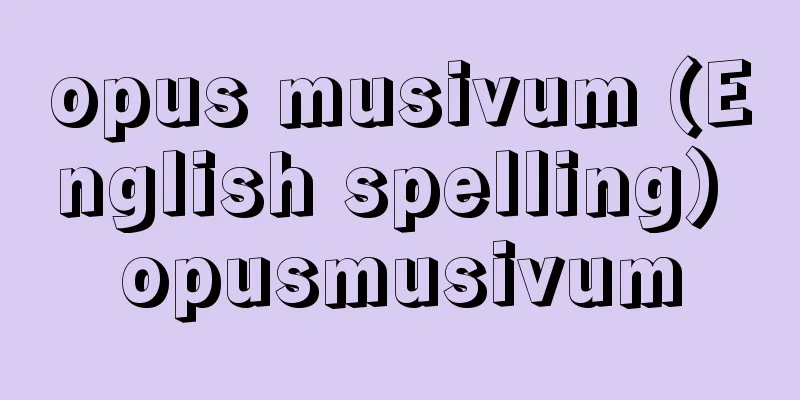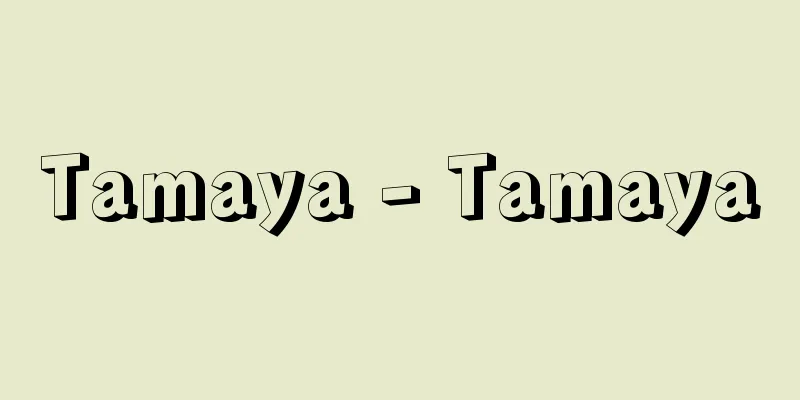Carbon monoxide poisoning

|
Carbon monoxide poisoning is caused by inhaling carbon monoxide. Carbon monoxide is produced when organic matter or carbon is incompletely burned, and also when carbon dioxide comes into contact with red-hot metal or carbon. Therefore, poisoning can occur in many places, including industrial sites, as well as indoors and in gas baths that use city gas, propane gas, oil, charcoal, and charcoal that do not use natural gas. Carbon monoxide itself is not toxic, but rather binds to hemoglobin in red blood cells in the lungs, impeding the body's ability to supply oxygen, leading to oxygen deficiency in tissue cells, which is thought to result in symptoms of poisoning. Carbon monoxide binds to hemoglobin about 300 times stronger than oxygen, so if there is 0.07% carbon monoxide in the air you breathe, 50% of the hemoglobin in your blood will bind to carbon monoxide, and the amount of oxygen supplied to your body will be halved. However, the bond between carbon monoxide and hemoglobin is reversible, so in carbon monoxide-free air, the carbon monoxide in your blood is expelled in your breath, and hemoglobin will return to binding with oxygen. This is why people are transported to fresh air as a first aid measure. When the amount of carboxyhemoglobin in the blood exceeds 10%, the body begins to suffer from oxygen deficiency. This is the amount that would be produced if 100 parts per million (ppm) of carbon monoxide were inhaled for more than five and a half hours. However, even at levels below 10%, central nervous system dysfunction can occur. This is the amount of carboxyhemoglobin that would be produced if 20-30 ppm of carbon monoxide were inhaled for four to five hours. Therefore, caution is required for those engaged in work that requires quick judgment and reaction. In addition, when looking at the relationship between smoking and carbon monoxide inhalation, the amount of carboxyhemoglobin in non-smokers is 0.6-0.8%, whereas smoking about 20 cigarettes a day increases it to 3-6%, and in heavy smokers it can reach 5-10%, so caution is needed. Female smokers in particular should be aware of the effects on the fetus. In acute poisoning, the central nervous system, which is sensitive to a lack of oxygen, is affected first, causing symptoms such as headache, dizziness, tinnitus, palpitations, shortness of breath, nausea, and vomiting. If the condition progresses further, the patient may experience confusion, convulsions, coma, and death. In severe cases, after the carbon monoxide has been released from the body, aftereffects occur. These include central nervous system disorders such as impaired consciousness, headache, memory loss, constriction of the visual field, and aphasia, as well as circulatory system disorders such as myocardial infarction. Hyperbaric oxygen therapy is performed during the acute phase. Chronic poisoning is said to occur as a result of repeated mild acute poisoning, while another view is that it may occur as a result of inhaling carbon monoxide at around 10-50 ppm over a long period of time. Symptoms include forgetfulness, insomnia, loss of stamina, numbness in the hands and feet, as well as personality and emotional changes, visual impairments such as color field constriction, and abnormalities in electrocardiograms. The permissible concentration of carbon monoxide for occupational health purposes is 50 ppm, and the environmental standards for the living environment are an average hourly value of 20 ppm or less over a continuous eight-hour period, and an average hourly value of 10 ppm or less over a continuous 24-hour period. [Sadayoshi Shigeta] Source: Shogakukan Encyclopedia Nipponica About Encyclopedia Nipponica Information | Legend |
|
一酸化炭素を吸入することによっておこる中毒症状。一酸化炭素は有機物や炭素が不完全燃焼する際に発生し、また炭酸ガス(二酸化炭素)が赤熱した金属や炭素と接触するときにも生ずる。したがって中毒は、産業現場のほか、天然ガスを用いない都市ガスをはじめ、プロパンガス、石油、木炭、煉炭(れんたん)などを使う室内やガス風呂(ぶろ)の浴室など、発生する場は多い。 一酸化炭素はそれ自体に毒性があるのではなく、肺で赤血球中のヘモグロビンと結合して体内の酸素供給能力を妨げ、体内組織細胞の酸素欠乏を招く結果として中毒症状が現れると考えられている。一酸化炭素のヘモグロビンとの結合力は酸素より約300倍も強く、呼吸する空気中に一酸化炭素が0.07%あれば、血液中のヘモグロビンの50%が一酸化炭素と結合し、体内への酸素供給量は半減する。しかし、一酸化炭素とヘモグロビンとの結合は可逆的であり、一酸化炭素を含まない空気中では、血液中の一酸化炭素は呼気中に排出され、ヘモグロビンはもとのように酸素と結合するようになる。応急処置として新鮮な空気中に運搬するのはこのためである。 血液中の一酸化炭素ヘモグロビン量が10%を超えると、生体には酸素不足による影響が現れる。これは100ppm(百万分率)の一酸化炭素を5時間半以上吸入したときに生成される量である。しかし、10%以下でも中枢神経系の機能障害がみられる。これは、20~30ppmの一酸化炭素を4~5時間吸入した際に生ずる一酸化炭素ヘモグロビン量である。したがって、敏速な判断や反応を必要とする作業に従事する者は注意を要する。 また、喫煙と一酸化炭素吸入との関係をみると、非喫煙者では一酸化炭素ヘモグロビン量は0.6~0.8%であるのに対し、1日20本程度の喫煙で3~6%、ヘビースモーカーでは5~10%にも達するので注意する必要がある。とくに女性喫煙者は胎児への影響もあるので注意すべきであろう。 急性中毒では、まず酸素不足に敏感な中枢神経系がその影響を受け、頭痛、めまい、耳鳴り、心悸亢進(しんきこうしん)、息切れ、吐き気、嘔吐(おうと)などがおこり、さらに進むと意識混濁、けいれん、昏睡(こんすい)に陥り、死に至る。重症の場合には、体内から一酸化炭素が排出されたのち、後遺症がおこる。それは、意識障害、頭痛、記憶力減退、視野狭窄(きょうさく)、失語症などの中枢神経系の障害と、心筋梗塞(こうそく)などの循環系障害である。なお、急性期には高圧酸素療法が行われる。 慢性中毒は、軽い急性中毒の繰り返しによっておこるという見方と、10~50ppm程度の一酸化炭素を長期間吸入することによっておこるのではないかとの見方がある。症状としては、物忘れ、不眠、根気がなくなる、手足がしびれるなどのほか、人格や感情の変化、色視野狭窄などの視覚障害、心電図の異常などがある。労働衛生上の一酸化炭素の許容濃度は50ppm、生活環境における環境基準は連続8時間における1時間値の平均が20ppm以下、連続24時間における1時間値の平均が10ppm以下となっている。 [重田定義] 出典 小学館 日本大百科全書(ニッポニカ)日本大百科全書(ニッポニカ)について 情報 | 凡例 |
<<: Carbon monoxide transformation reaction
>>: 《One Kill, Many Lives Sword》
Recommend
Galeola
…A large saprophytic orchid that lives symbiotica...
Forlanini, C.
…This type of pneumothorax is called a closed pne...
Alvaro I (English spelling)
…Most of these slaves were sent to Brazil and the...
Augite (English spelling)
A type of calcium-rich clinopyroxene, it is the mo...
Thorn - Thorn
In plants, needles are a general term for hard, wo...
philanthrōpia (English spelling) philanthropy
…The idea of fraternity, which became a Western...
Igakusa - Igakusa
...It is distributed west of Aichi Prefecture in ...
Western Australia
A state in Western Australia. It has an area of ...
Lilium concolor (English spelling) Liliumconcolor
…[Tetsuichi Yahara]. … *Some of the terminology t...
King Daiitoku
One of the Five Great Wisdom Kings. Placed in the...
Schein, Edgar Henry
Born March 5, 1928. American business scholar. Stu...
Starley, J.
...The Michaux type was the first mass-produced b...
Lamarckism
This is an evolutionary theory proposed by the Fre...
Arago's Turntable - Arago's Turntable
...Eddy currents are generated in an electrical c...
position selectivity
…In organic chemical reactions, this refers to th...









